Lists

Conservationists are struggling to protect the many penguin species that are getting closer to extinction each year, the main struggle penguins experience is climate change. While penguins are threatened by overfishing and ocean acidification, a petition, which was filed in 2006, named climate change as the primary challenge to their survival. Conservationists had hoped that the petition would force the Obama administration to confront climate change as a threat to ecology and biodiversity worldwide.(1) The number of extant penguin species is debated. Depending on which authority is followed, penguin biodiversity varies between 17 and 20 living species, all in the subfamily Spheniscinae. The numbers change, but there are only about 5 species of penguin that are not listed as threatened or endangered each year. Some species like the Emperor Penguin should be included but, the extensive protections and regulatory requirements that come along with listing under the Endangered Species Act mean that the spots available are limited—and the petitions and decisions tend to be based more on politics than population tallies.(2)
Here is a list of 5 species of penguin that are considered to be endangered!
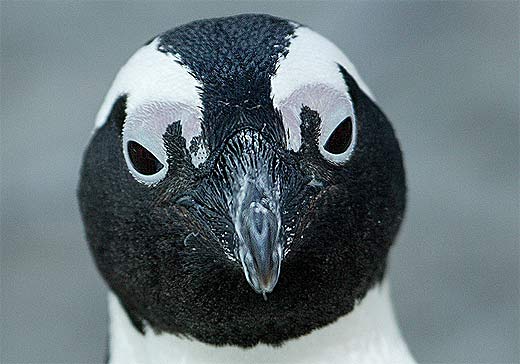


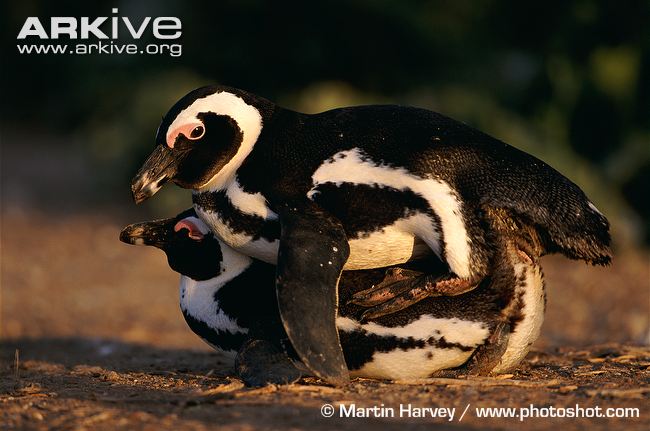



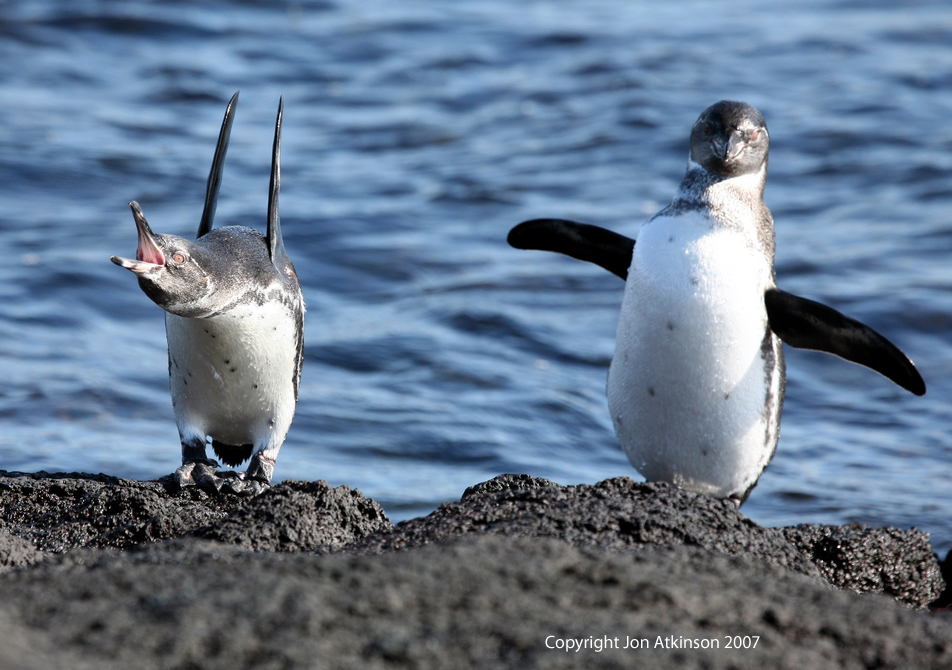



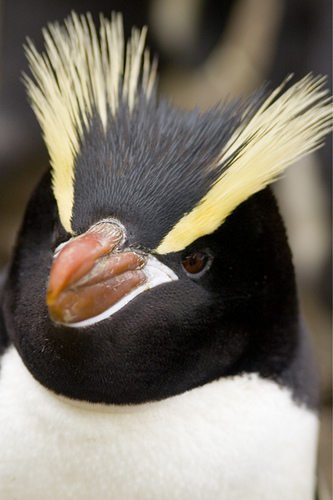

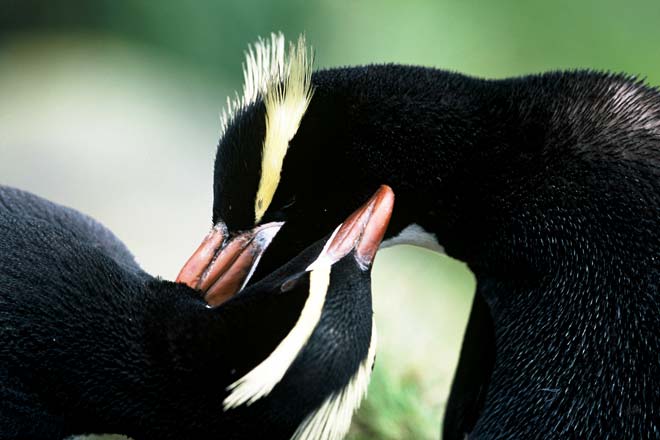

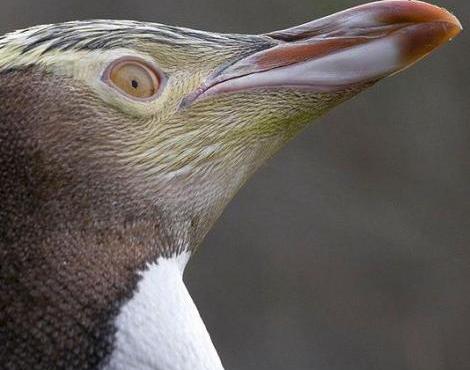
The yellow-eyed penguin (Megadyptes antipodes) or hoiho is a penguin native to New Zealand. Previously thought closely related to the little penguin (Eudyptula minor), molecular research has shown it more closely related to penguins of the genus Eudyptes. Like most other penguins, it is mainly piscivorous. The species breeds around the South Island of New Zealand, as well as Stewart, Auckland, and Campbell Islands. Colonies on the Otago Peninsula are a popular tourist venue, where visitors may closely observe penguins from hides, trenches, or tunnels.(s)
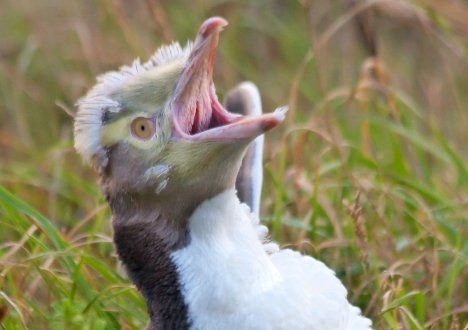
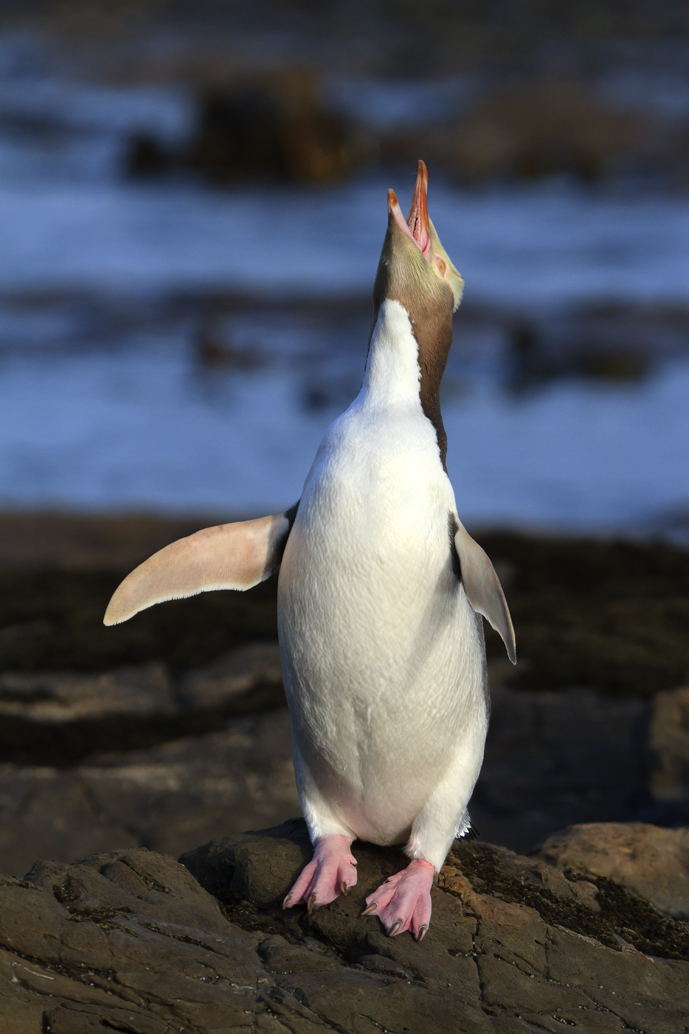

The northern rockhopper penguin, Eudyptes c. moseleyi, is usually considered a subspecies of rockhopper penguin, although fairly recent studies show evidence of distinction from the southern rockhopper penguin group Eudyptes c. chrysocome/E. c. filholi. A study published in 2009 showed that the population of the northern rockhopper had declined by 90% since the 1950s. For this reason, the northern rockhopper penguin is classified as endangered.(s)

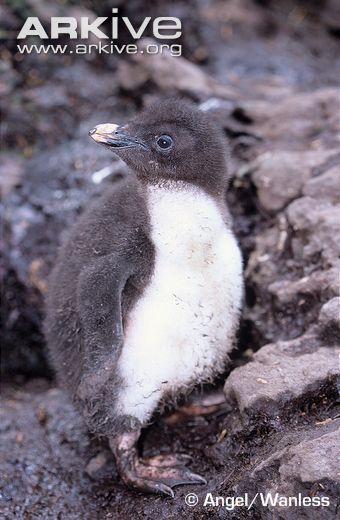

5 Cute Penguins Listed as Endangered, climate-change, conservation, conservation-programs, cute-penguins, endangered-animals, endangered-species, penguins, endangered-penguins, cutest animals, african penguin, northern rockhopper, penguin, yellow eyed penguin, erect crested penguin, galapagos penguin, galapagos animals, Spheniscinae5 Cute Penguins Listed as Endangered, climate-change, conservation, conservation-programs, cute-penguins, endangered-animals, endangered-species, penguins, endangered-penguins, cutest animals, african penguin, northern rockhopper, penguin, yellow eyed penguin, erect crested penguin, galapagos penguin, galapagos animals, Spheniscinae5 Cute Penguins Listed as Endangered, climate-change, conservation, conservation-programs, cute-penguins, endangered-animals, endangered-species, penguins, endangered-penguins, cutest animals, african penguin, northern rockhopper, penguin, yellow eyed penguin, erect crested penguin, galapagos penguin, galapagos animals, Spheniscinae Share on Tumblr
Share on Tumblr
- 5 Modern Reptiles That Give Birth To Live Young
Adder giving birth to live young.Ovoviviparous is the term used for reptiles that give birth to live young, which only represents about 20 percent of the modern scaled reptile population. Ovoviviparous species are similar to viviparous species in that...
- 15 Giant Bugs, Insects, And Invertebrates - Images Of Huge Bugs That Will Give You The Creeps
#1 Giant Snails The Achatinidae family of land snails consist of three species the giant African snail (Achatina fulica), the giant tiger land snail (Achatina achatina), and the giant West African snail (Archachatina marginata). All three of these...
- List Of 20 Critically Endangered Species That Zoos Are Helping To Preserve
Zoos are seen by some as dark places that hold captured animals prisoner behind concrete walls and electric fences. Some people compare them to prisons, but worse, because a zoo creates a spectacle out of these saddened creatures. The animals are gawked...
- Top 10 Largest Islands In The World
Earth consists of 70 % water and 30% land. In 30 % there are some lands which are surrounded by water. There are many islands in the world. All of them have fantastic and amazing beauty. Heart breaking sun sets, fascinating moon light and cool breezes...
- The 10 Venomous Snake In Australia
Here’s the top 10 list of the most dangerous snake to be avoided in Australia. Number 10 in the List – The Brown Tree SnakeScientific Name: Boiga Irregularis The Brown Tree Snake has average length of 1.5 to 1.8 metres . The longest recorded...
Lists
5 Cute Penguins Listed as Endangered

Here is a list of 5 species of penguin that are considered to be endangered!
#1 African Penguin

The African penguin (Spheniscus demersus), also known as the jackass penguin and black-footed penguin is a species of penguin, confined to southern African waters. It is also widely known as the "jackass" penguin for its donkey-like bray, although several related species of South American penguins produce the same sound.(s) The African Penguin, Spheniscus demersus, is listed as ‘Endangered’ on the IUCN Red List of Threatened SpeciesTM. It is confined to southern African waters and breeds at 25 islands and four mainland sites in Namibia and South Africa. It has been recorded as far north as Gabon and Mozambique.
This species of penguin is undergoing a very rapid population decline, which led to its uplisting to ‘Endangered’ in 2010, largely attributed to food shortages due to commercial fishing and environmental fluctuations. Other threats include: egg collection, guano collection, oil spills, competition with Cape Fur Seals, Arctocephalus pusillus, for food and displacement from breeding sites (and is a periodic predator), mortality from fishing nets and predation by sharks, feral cats and Kelp Gulls, Larus dominicanus.

The African Penguin is protected by listings on Appendix II of the Convention on International Trade in Endangered Species (CITES), and on Appendix II of the Convention on Migratory Species (CMS). In South Africa, all breeding localities are national parks, nature reserves or otherwise protected. Collection of guano and eggs is also prohibited. The SANCCOB oil spill rehabilitation center also needs to be continued and maintained.(s)


#2 Galapagos Penguin

The Galapagos penguin (Spheniscus mendiculus) is a penguin endemic to the Galapagos Islands. It is the only penguin that lives north of the equator in the wild. It can survive due to the cool temperatures resulting from the Humboldt Current and cool waters from great depths brought up by the Cromwell Current. The Galapagos penguin is one of the banded penguins, the other species of which live mostly on the coasts of Africa and mainland South America.(s)

Long-term monitoring indicates that this species is undergoing severe fluctuations, primarily as a result of marine perturbations that may be becoming more extreme. These perturbations have caused an overall very rapid population reduction over the last three generations (34 years). In addition, it has a small population, and is restricted to a very small range, with nearly all birds breeding at just one location. These factors qualify it as Endangered.(s)
 |
| Penguins are threatened by pollution, bycatch and climate change. Introduced species, such as dogs, carry diseases that can spread to penguins as well, and cats pose a threat as predators. Past strong El Niño events have caused mortalities of up to 77 percent, with dramatic declines of prey species and reduced breeding success. |
It's population is thought to number fewer than 2,000 individuals. Approximately 95 % of the Galápagos Penguin's population is found on Isabela and Fernandina Islands in the western part of the archipelago, with the remaining 5 % on Bartolomé, Santiago, Logie and Floreana Islands in the central-south area of the archipelago (Jiménez-Uzcátegui et al. 2006, Vargas et al. 2007).

Although the annual penguin census shows a relatively stable and even slightly increasing population trend over the last nine years, the current small population size (1,009 individuals counted in 2007) represents only a small fraction of that in the 1970s. The main breeding range stretches along the coast of the two westernmost islands, encompassing approximately 402 km of coastline, where 96% of all nests are found.(s)



#3 Erect-Crested Penguin

The erect-crested penguin (Eudyptes sclateri) is a penguin from New Zealand. It breeds on the Bounty and Antipodes Islands, but individuals have been found as far away as the Falkland Islands. This species is threatened by population decline, and a small breeding range restricted to two locations. The current population is estimated at 130,000 to 140,000. In addition to being listed as an endangered species on the IUCN Red List, the erect-crested penguin is listed as endangered and granted protection under the U.S. Endangered Species Act.(s)

This species is classified as Endangered because its population is estimated to have declined very rapidly over the last three generations, and it is almost certainly still declining. Furthermore, it has a very small breeding range, which many now be restricted to just two locations.(s)

In 1995, ground surveys indicated c.49,000-57,000 pairs, representing a decline of c.50% in 20 years. The survey in 2011 shows a further decline, with c.41,000 pairs counted, representing a decline of 23%. The population on Campbell Island numbered 20-30 pairs in 1986-1987, but no breeding was seen. A few hundred birds bred there in the 1940s. Winter distribution at sea is largely unknown, the only records being from the Cook Strait and off the east coast of the South Island.(s)

#4 Yellow-Eyed Penguin

The yellow-eyed penguin (Megadyptes antipodes) or hoiho is a penguin native to New Zealand. Previously thought closely related to the little penguin (Eudyptula minor), molecular research has shown it more closely related to penguins of the genus Eudyptes. Like most other penguins, it is mainly piscivorous. The species breeds around the South Island of New Zealand, as well as Stewart, Auckland, and Campbell Islands. Colonies on the Otago Peninsula are a popular tourist venue, where visitors may closely observe penguins from hides, trenches, or tunnels.(s)

This species is listed as Endangered because it is confined to a very small range when breeding, in which its forest/scrub habitat has declined in quality. Its population has undergone extreme fluctuations and is now thought to be in overall decline.(s)

#5 Northern Rockhopper Penguin

The northern rockhopper penguin, Eudyptes c. moseleyi, is usually considered a subspecies of rockhopper penguin, although fairly recent studies show evidence of distinction from the southern rockhopper penguin group Eudyptes c. chrysocome/E. c. filholi. A study published in 2009 showed that the population of the northern rockhopper had declined by 90% since the 1950s. For this reason, the northern rockhopper penguin is classified as endangered.(s)
 |
| The northern rockhopper penguin is classified as endangered because of the decline in numbers over the last three generations (or 30 years) |
The current population is estimated to be between 100,000–499,999 breeding pairs at Gough Island, 18,000 to 27,000 pairs at Inaccessible Island, and 3,200 to 4,500 at Tristan da Cunha. In the Indian Ocean, the population was 25,500 pairs on Amsterdam Island, and 9,000 pairs on St Paul Island in 1993. Declines at the Atlantic Ocean sites show a decline of 2.7% per year; the drop in the population at Gough Island has been described as equivalent to the loss of 100 birds every day since the 1950s.

A study published in 2009 showed that the world population of the northern rockhopper had declined by 90% since the 1950s, possibly because of climate change, changes in marine ecosystems and overfishing for squid and octopus by humans. Other possible factors in the decline include disturbance and pollution from ecotourism and fishing, egg-harvesting, predation from introduced house mice (Mus musculus) and predation and competition from subantarctic fur seals (Arctocephalus tropicalis).(s)

5 Cute Penguins Listed as Endangered, climate-change, conservation, conservation-programs, cute-penguins, endangered-animals, endangered-species, penguins, endangered-penguins, cutest animals, african penguin, northern rockhopper, penguin, yellow eyed penguin, erect crested penguin, galapagos penguin, galapagos animals, Spheniscinae5 Cute Penguins Listed as Endangered, climate-change, conservation, conservation-programs, cute-penguins, endangered-animals, endangered-species, penguins, endangered-penguins, cutest animals, african penguin, northern rockhopper, penguin, yellow eyed penguin, erect crested penguin, galapagos penguin, galapagos animals, Spheniscinae5 Cute Penguins Listed as Endangered, climate-change, conservation, conservation-programs, cute-penguins, endangered-animals, endangered-species, penguins, endangered-penguins, cutest animals, african penguin, northern rockhopper, penguin, yellow eyed penguin, erect crested penguin, galapagos penguin, galapagos animals, Spheniscinae
 Share on Tumblr
Share on Tumblr
- 5 Modern Reptiles That Give Birth To Live Young
Adder giving birth to live young.Ovoviviparous is the term used for reptiles that give birth to live young, which only represents about 20 percent of the modern scaled reptile population. Ovoviviparous species are similar to viviparous species in that...
- 15 Giant Bugs, Insects, And Invertebrates - Images Of Huge Bugs That Will Give You The Creeps
#1 Giant Snails The Achatinidae family of land snails consist of three species the giant African snail (Achatina fulica), the giant tiger land snail (Achatina achatina), and the giant West African snail (Archachatina marginata). All three of these...
- List Of 20 Critically Endangered Species That Zoos Are Helping To Preserve
Zoos are seen by some as dark places that hold captured animals prisoner behind concrete walls and electric fences. Some people compare them to prisons, but worse, because a zoo creates a spectacle out of these saddened creatures. The animals are gawked...
- Top 10 Largest Islands In The World
Earth consists of 70 % water and 30% land. In 30 % there are some lands which are surrounded by water. There are many islands in the world. All of them have fantastic and amazing beauty. Heart breaking sun sets, fascinating moon light and cool breezes...
- The 10 Venomous Snake In Australia
Here’s the top 10 list of the most dangerous snake to be avoided in Australia. Number 10 in the List – The Brown Tree SnakeScientific Name: Boiga Irregularis The Brown Tree Snake has average length of 1.5 to 1.8 metres . The longest recorded...
